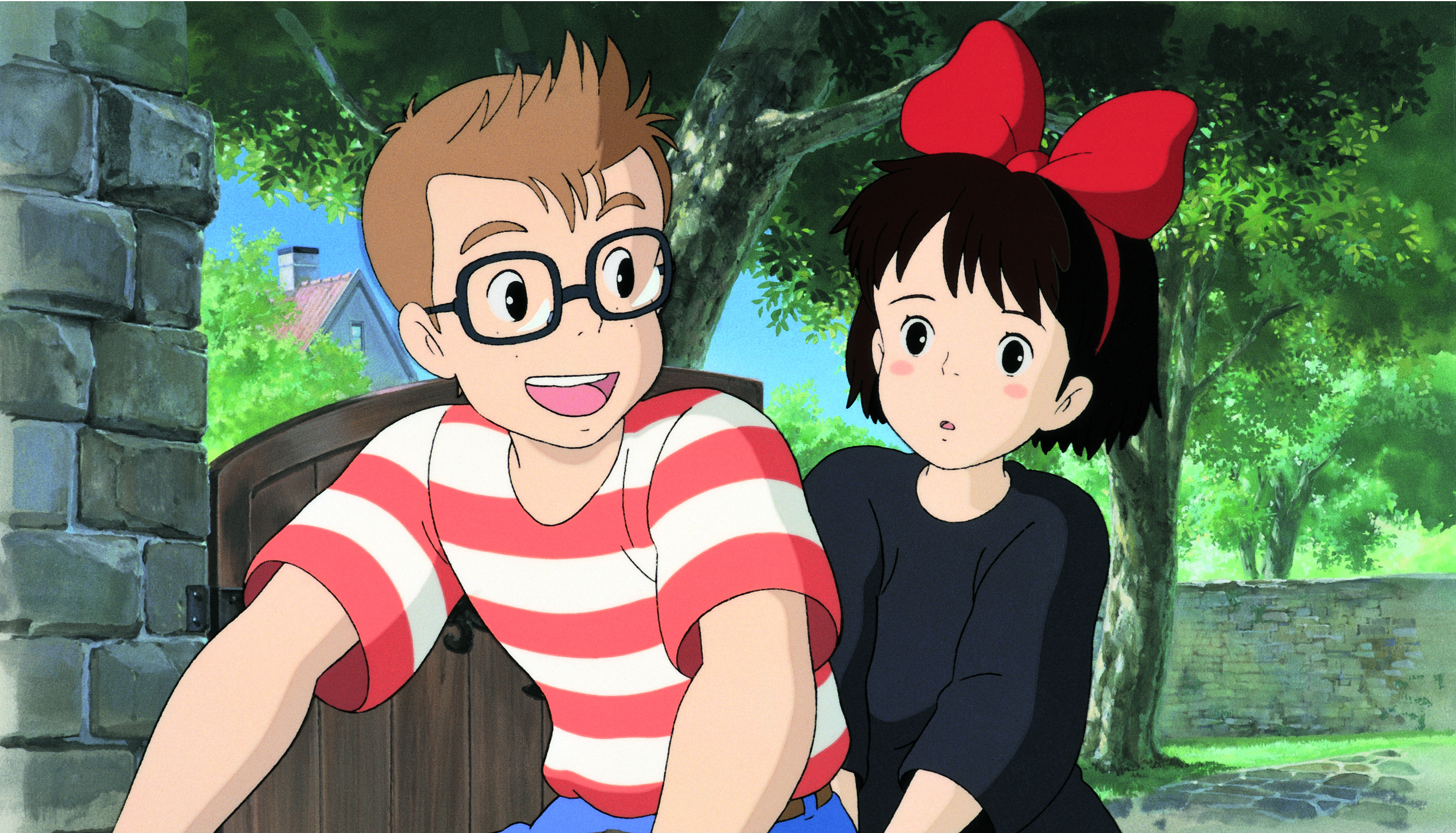The more fantastical of Studio Ghibli’s films like Howl’s Moving Castle, Spirited Away and Ponyo are the 800 pound gorillas of its output – very visible, very visual, full of sparkling invetion and whimsy.

Other films like The Wind Rises and Grave of the Fireflies don’t have the same fantasy whizz bangery (mostly because they have more real world plots), and Kiki’s Delivery Service, with only a few magical motifs, is among them.
But like their less showy movies, it has a soft charm all its own that makes it as worth watching as any other. For one thing (and this is a constant theme from Studio Ghibli), the seaside township Kiki lives in is beautifully tactile, making you want to reach into the screen and live there yourself, details as seemingly-unimportant as water dripping off a roof gutter adding to the texture that makes such simplistic, pre-CG 2D animation feel so alive.
Kiki is coming up on the rite of passage all trainee witches do in their young teens where she has to spend a year away from home, ingratiating herself into the world and consolidating her powers. As the film opens she’s not due to leave for another few weeks, but the full moon gives her a sign that it’s time and in a flurry she bids her parents and friends farewell and sets off on her broomstick with her familiar, a small and sardonic black cat named Jiji. I’m not sure which version I watched, but Disney rereleased it in the late 90s with Kirsten Dunst playing Kiki and Phil Hartman playing Jiji – the cat sure sounded like the late Simpsons star.
She finds herself in a cute port city with a booming township, a gentle breeze and rolling hills above where she falls in with a kindly bakery owner, Osono. In exchange for helping Osono at the bakery Kiki gets room and board at an upstairs room, and she decides to work on her flight skills by starting a business on the side delivering stuff for customers around town.
In doing so she befriends two elderly ladies in a nearby manor and local boy Tombo, who has an obvious crush on her but with whose friends Kiki can’t quite fit in.

The pre-third act dark time comes when Kiki has become disillusioned with the whole witch and delivery thing, exhausted and sick and suddenly realising she can’t understand Jiji anymore and has forgotten how to fly.
Then the crisis hits when a gigantic airship that’s been moored down on the beach comes loose in a gust with Tombo attached, floating across town threatening destruction. Kiki has to get back on her broom and hope she’s remembered enough to save her friend and fulfil her destiny.
As well as a lush visual and tactile treat there’s some great yet unobtrusive world-building. The other characters take witchcraft and broomstick flight as a given, regarding the young heroine no differently than we would a student on a gap year backpacking across Europe.
It’s also a strong metaphor for finding and maintaining your voice as an artist. The young woman Kiki befriends after a delivery who lives in the forest is a painter, and it’s her advice that guides Kiki back on the path to realising her powers as a witch – what else is it but a metaphor for overcoming writer’s block?
And even though it seems different from Ponyo, Howl, etc on the surface because the only fantasy element is witchcraft, all the usual themes director Hayao Miyazaki loves are there, from flight and wind to towns by the water.
It’s also quite amazing to realise after it’s over not just that it has a childlike outlook (to say nothing of the traditionally kid-friendly medium of animation), it’s how engaging and affecting it’s been even though there’s no real antagonist. Everyone is friendly and accepting or at the least decent, perhaps a testament to the kind of world Miyazaki wishes we lived in.
Subscribe to FIB’s Weekly Alchemy Report for your weekly dose of music, fashion and pop culture news!







